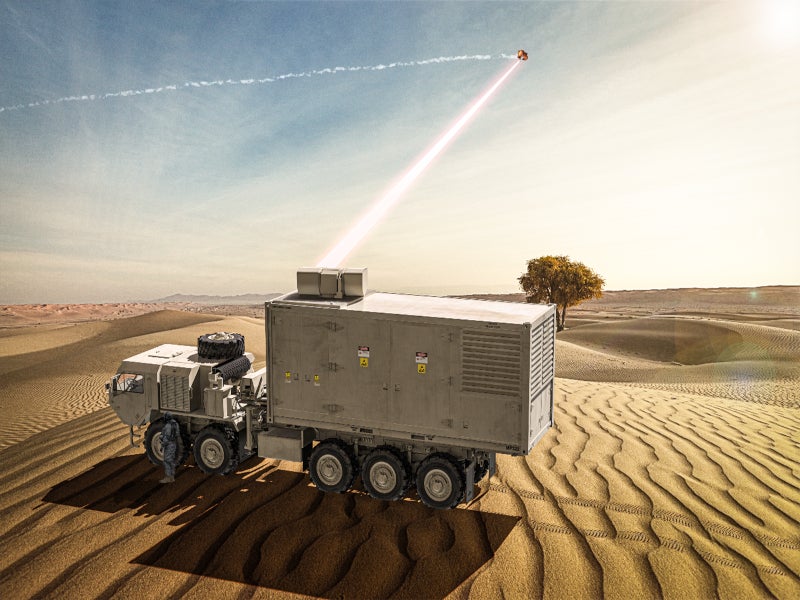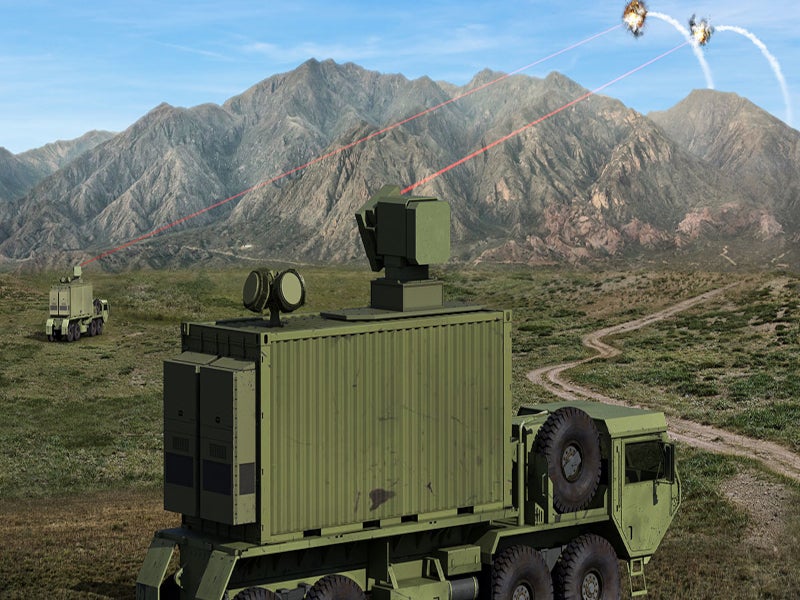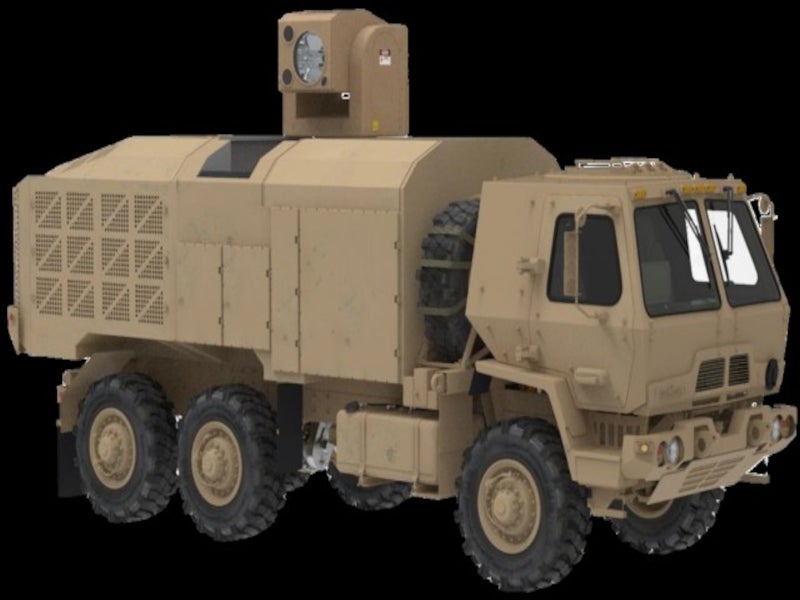The 300kW-class High-Energy Laser Weapon System (HELWS) is being developed as part of the US Department of Defense’s (DoD) High Energy Laser Scaling Initiative (HELSI) programme to develop high-performance directed energy weapons (DEW) for the US Armed Forces and enhance their combat power against constantly evolving threats.
The HELSI will support the US Army’s broader Indirect Fire Protection Capability-High Energy Laser (IFPC-HEL) programme, which aims to safeguard stationary and partially stationary sites against rockets, artillery, mortars, unmanned aerial systems and both rotary and fixed-wing threats.
The IFPC-HEL programme focuses on integrating high-energy laser technology into existing defence systems, enabling rapid response and precision engagement of incoming threats. It will improve the armed forces’ combat effectiveness by providing high-power lasers and greater warfighting capability.
The US Army plans to field up to four operational 300KkW-class IFPC-HEL prototypes integrated into tactical military vehicles by 2024.
300kW-class HELWS development details
In 2019, the US DoD, as part of the HELSI programme, selected Lockheed Martin to advance its spectral beam combined high-energy laser architecture to reach a power level of 300kW-class under a contract valued at $83m.
Lockheed Martin delivered a tactically relevant electric laser with a power rating of 300kW in September 2022, the company’s most powerful laser ever produced.
US-based laser manufacturing company nLight Photonics was also awarded a $48m contract to develop a 300kW-class HEL device using its coherent beam combined (CBC) technology in 2019. The company demonstrated the scalability of its CBC architecture in 2022.
In April 2020, US-based energy and defence company General Atomics received a $47m contract to develop a distributed gain laser prototype of a 300kW-class HEL device.
Subsequently, General Atomics Electromagnetic Systems (GA-EMS), an affiliate of General Atomics, teamed up with aircraft manufacturer Boeing to demonstrate a design for a 300kW-class solid state distributed gain HELWS in October 2021.
The team will deliver a 300kW-class distributed gain laser with an integrated beam director developed by Boeing.
In May 2023, nLight received an $86m multi-year contract to produce a HEL prototype for the next phase of development in support of the HELSI programme, which is expected to begin in late 2023.
300kW-class HELWS design details
The HELWS will serve as a mobile laser system with counter-unmanned aerial system (C-UAS) capability for air defence. The system comprises a laser weapon and a multispectral targeting system mounted on the back of a tactical vehicle.
Lockheed Martin’s 300kW-class laser can be integrated with the US Army’s IFPC-HEL demonstrator laser weapon system.
GA-EMS and Boeing will deliver a high-power, compact laser weapon subsystem prototype, which is expected to produce a lethal output greater than anything fielded to date. The prototype will utilise GA-EMS’ scalable, distributed gain laser technology with Boeing’s beam director and precision acquisition, tracking and pointing software to offer a comprehensive demonstrator system.
The laser weapon system prototype will be a packed version of GA-EMS’ seventh-generation distributed gain design, employing two advanced laser heads in a very compact and lightweight package. The latest improvements in the architecture have allowed the company’s single-beam distributed gain laser to achieve beam quality similar to that of fibre lasers without requiring any beam combination.
Operational advantages of the directed energy weapon (DEW) system
The DEW system involves lightweight hardware and can engage targets instantaneously, offering a solution to ever-changing threats and reducing the logistical requirements associated with traditional kinetic weapons.
It can engage targets at the speed of light with high precision, limited collateral damage and no time of flight. It can also provide a deeper magazine at a lower cost per shot than conventional munitions.
Other players involved in the 300kW-class HELWS development
The US DoD awarded a $72m contract to Northrop Grumman, an aerospace and defence company based in the US, under HELSI in March 2021. The contract’s objective was to showcase a 300kW HEL prototype incorporating Northrop Grumman’s CBC technology.
In July 2022, the company completed the preliminary design review for the prototype, which will feature an architecture with the potential to be scaled up to a power level of more than a megawatt, depending on the requirement. The prototype will demonstrate the capability to combine high-power laser beams into a single beam.
Dynetics, a wholly-owned subsidiary of US-based engineering company Leidos, is also scaling up the power of their proven 100kW-class High Energy Laser Tactical Vehicle Demonstrator (HEL-TVD) system to a 300kW-class IFPC-HEL system for the US Army.






